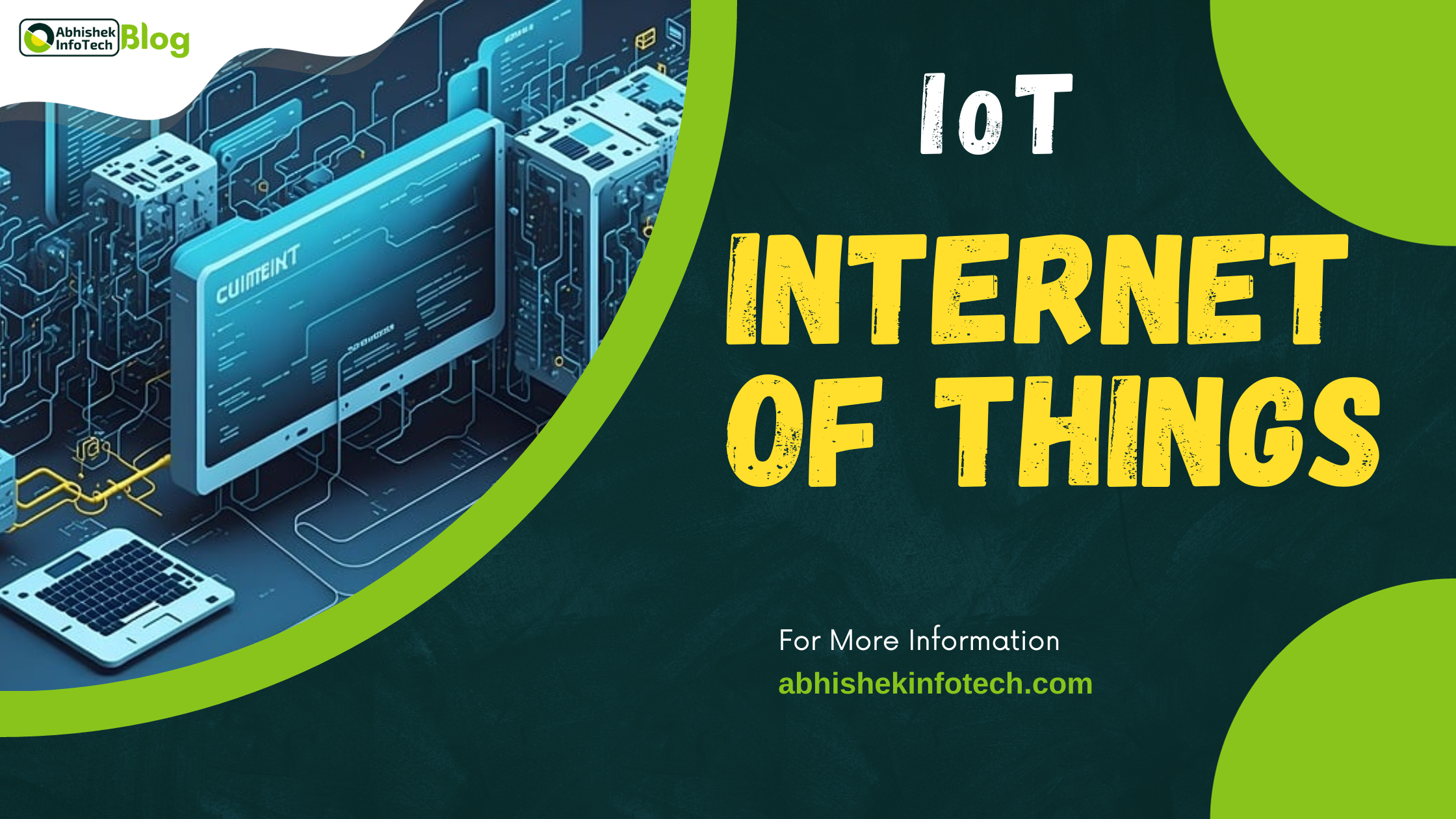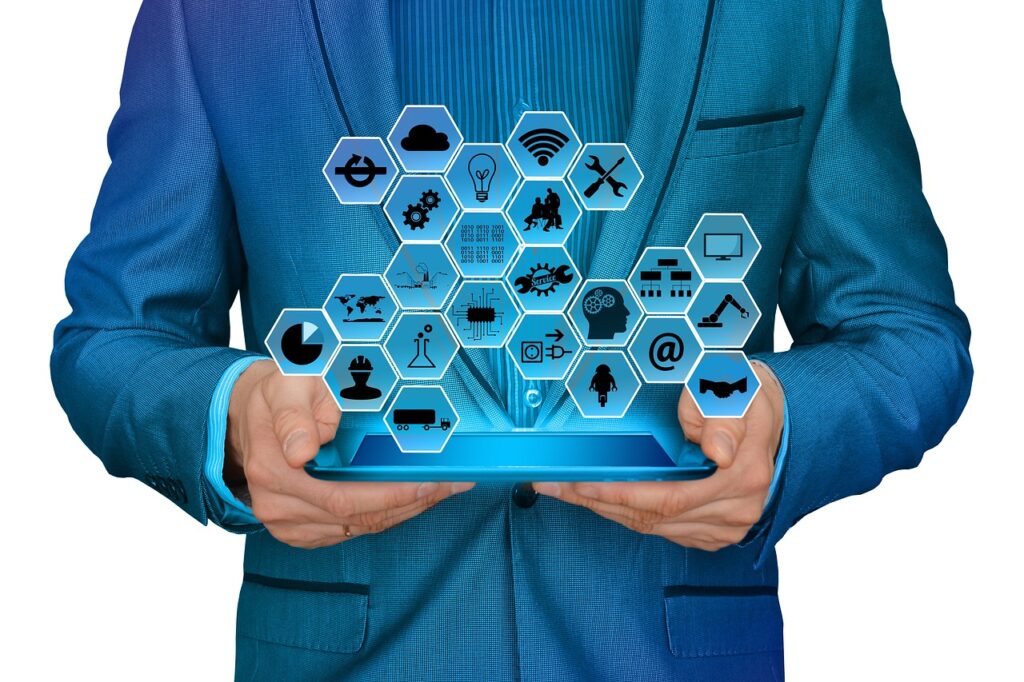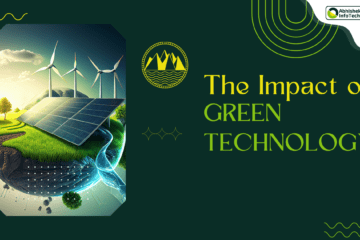The Future of the Internet of Things (IoT) is Now

Internet of Things (IoT): Revolutionizing Connectivity and Beyond
In a world where technology is evolving at an unprecedented pace, the concept of the Internet of Things (IoT) has emerged as a game-changer. Imagine a seamless network of interconnected devices and systems that communicate, share data, and collaborate autonomously – this is the essence of the IoT. From smart homes and cities to industrial processes and healthcare systems, the IoT has the potential to revolutionize the way we live and work.
Smart Devices: The Building Blocks of IoT
At the heart of the IoT revolution are smart devices – everyday objects equipped with sensors, software, and connectivity capabilities. These devices can range from smart thermostats and wearable fitness trackers to connected cars and industrial machinery. What sets smart devices apart is their ability to collect and exchange data with other devices and central systems, enabling them to perform tasks efficiently and even make intelligent decisions.
Take, for instance, a smart refrigerator. Beyond its primary function of keeping food fresh, it can also inventory its contents, track expiration dates, and even suggest recipes based on available ingredients. This integration of technology into our daily lives is just the beginning of what the IoT has to offer.
IoT-Enabled Solutions: Transforming Industries
The potential of the IoT extends far beyond individual devices; it’s about creating interconnected ecosystems that can solve complex problems and enhance efficiency across industries. One prime example is the implementation of smart grids in the energy sector. By enabling real-time monitoring and control of electricity distribution, IoT-powered grids can optimize energy usage, detect faults, and even facilitate the integration of renewable energy sources.
In healthcare, IoT devices are reshaping patient care. Wearable health monitors can track vital signs and alert medical professionals if abnormalities are detected. This remote monitoring not only improves patient outcomes but also reduces the burden on healthcare facilities.
In agriculture, IoT sensors can gather data about soil moisture, temperature, and crop health. This information allows farmers to make informed decisions about irrigation, pest control, and crop rotation, leading to higher yields and more sustainable practices.
Security Concerns: Safeguarding the IoT Landscape
While the IoT holds immense promise, its rapid proliferation has raised significant security concerns. With countless devices connected to the internet, the attack surface for cybercriminals has expanded exponentially. Weaknesses in device security could lead to unauthorized access, data breaches, and even the potential manipulation of interconnected systems.
Manufacturers must prioritize security measures, such as robust encryption, regular software updates, and the implementation of authentication protocols. Users, on their part, should practice proper cybersecurity hygiene, like changing default passwords and being cautious about granting permissions to devices.
The Potential for Interconnected Systems: Shaping the Future
The true power of the IoT lies in its ability to create interconnected systems that drive automation and efficiency. Consider a smart city where traffic lights adjust based on real-time traffic data, waste management systems optimize collection routes, and public transportation adapts to commuter patterns.
Industrial settings are also poised for transformation through the IoT. The concept of Industry 4.0 revolves around the integration of digital technologies into manufacturing, resulting in intelligent factories that can self-monitor, self-diagnose issues, and streamline production processes. This not only boosts productivity but also reduces downtime and waste.
Conclusion
The Internet of Things represents a paradigm shift in how we perceive and interact with technology. From enhancing convenience in our homes to revolutionizing entire industries, the IoT’s potential is vast and awe-inspiring. However, as with any technological advancement, addressing security concerns is paramount. By prioritizing robust security measures, we can pave the way for a future where interconnected systems empower us to lead more efficient, sustainable, and connected lives. The journey has just begun, and the possibilities are limitless.
Internet of Things (IoT): Unveiling the Realm of Connected Devices and Industry Transformation
In the era of digital innovation, the Internet of Things (IoT) has emerged as a trailblazing concept that is reshaping the landscape of technology and connectivity. At its core, the IoT revolves around the interconnection of everyday devices and systems through the Internet, ushering in a new era of efficiency, convenience, and innovation. In this blog, we’ll delve into the world of IoT devices, their diverse applications, and the transformative impact they’re having on various industries.
Understanding IoT Devices
IoT devices are the building blocks of this interconnected ecosystem. These devices go beyond conventional gadgets by integrating sensors, processors, and connectivity features that enable them to communicate, collect data, and perform actions based on real-time information. From smart thermostats that regulate home temperatures intelligently to wearable fitness trackers that monitor your health, IoT devices are seamlessly woven into our lives, enhancing various aspects of our daily routines.
Exploring IoT Applications
The applications of IoT are virtually limitless, permeating both consumer and industrial domains. Let’s explore some captivating use cases:
- Smart Homes: IoT-enabled devices have revolutionized home living. Smart speakers that respond to voice commands, smart locks that provide remote access control, and even smart refrigerators that create shopping lists based on their contents – all contribute to making our lives more convenient and efficient.
- Healthcare: IoT has found a vital role in healthcare. Wearable devices can track heart rate, sleep patterns, and activity levels, enabling individuals and healthcare providers to monitor overall well-being. IoT-equipped medical devices also aid in remote patient monitoring, improving patient care and reducing hospital visits.
- Transportation: The automotive industry has embraced IoT with the development of connected cars. These vehicles can collect data about driving patterns, engine health, and more. This data not only enhances the driving experience but also assists manufacturers in creating safer and more efficient vehicles.
- Retail: IoT devices enable retailers to gather valuable insights about customer behavior. Smart shelves can track inventory levels and even trigger automatic reordering when items run low. Beacon technology can send personalized offers and recommendations to shoppers’ smartphones based on their location within a store.
- Industrial IoT (IIoT): Industries like manufacturing, agriculture, and energy are leveraging IoT to optimize processes. IIoT enables predictive maintenance by collecting real-time data from machinery, reducing downtime, and preventing costly breakdowns. In agriculture, IoT sensors monitor soil conditions, helping farmers make informed decisions about irrigation and crop management.

IoT’s Transformative Impact on Industries
The influence of IoT goes far beyond convenience; it’s a catalyst for transformation across industries:
- Manufacturing: Industry 4.0 embraces IoT to create smart factories. Production lines equipped with sensors and connected devices can communicate real-time data to central systems. This data-driven approach enhances efficiency, reduces waste, and enables remote monitoring and control.
- Healthcare: IoT-driven remote patient monitoring enhances patient care while reducing hospitalization rates. Real-time health data empowers medical professionals to make informed decisions, leading to better outcomes.
- Energy: Smart grids equipped with IoT sensors optimize energy distribution. This allows for better management of energy resources, integration of renewable sources, and reduced energy wastage.
- Logistics and Supply Chain: IoT devices provide end-to-end visibility in logistics. Sensors on packages can track their location, temperature, and humidity, ensuring the integrity of goods during transit.
Challenges and Future Prospects
However promising, the IoT landscape isn’t devoid of challenges. Security and privacy concerns remain prominent due to the sheer volume of interconnected devices. Safeguarding data and preventing unauthorized access are crucial aspects that demand continuous innovation and vigilance.
As IoT continues to evolve, its potential remains staggering. Edge computing – processing data closer to its source – will enhance real-time analysis, reducing latency and bandwidth requirements. Integrating AI and machine learning will further empower IoT devices to make more intelligent decisions.
Conclusion
The Internet of Things has transcended its initial concept to become a reality that touches virtually every facet of modern life. IoT devices have enriched our lives with convenience and efficiency, while simultaneously catalyzing revolutionary changes across industries. As technology continues to advance and our interconnected world deepens, the potential for IoT to reshape industries, enhance sustainability, and redefine connectivity is boundless. Embracing this transformation is not merely an option but a necessity to thrive in the digitally connected future.
Unveiling the Future: Exploring the Internet of Things (IoT) and Its Impact on Daily Life, Smart Cities, and Beyond
In the era of digital transformation, the Internet of Things (IoT) has emerged as a transformative force, revolutionizing the way we interact with technology and the world around us. IoT has transcended mere connectivity to create a dynamic ecosystem of interconnected devices, promising to reshape urban living, enhance convenience, and elevate the quality of our daily lives. In this blog, we embark on a journey to unravel the world of IoT, delve into the concept of smart cities, explore connected devices, and fathom the profound impact they collectively hold.
The IoT Landscape: An Overview
At its core, IoT is a network of physical objects, devices, and sensors embedded with technology that allows them to connect and exchange data over the Internet. These devices range from smartphones and wearables to appliances, vehicles, and even infrastructure like streetlights. They gather and share data, often autonomously, to enable real-time insights and intelligent decision-making.
Connected Devices: Enhancing Daily Life
The proliferation of IoT devices has permeated various aspects of our daily lives. Consider waking up to an IoT-enabled smart alarm clock that adjusts your wake-up time based on your sleep cycle. As you brew your morning coffee using a smart coffee maker, it syncs with your schedule to ensure your coffee is ready precisely when you need it. IoT-powered wearable devices monitor your health and fitness metrics, guiding you toward a healthier lifestyle.
When you leave for work, your smart thermostat adjusts the temperature based on your preferences and detects when you’re away to conserve energy. On the road, your connected car communicates with traffic signals to optimize your route, saving time and reducing congestion.
Smart Cities: Pioneering Urban Transformation
Beyond individual devices, IoT plays a pivotal role in the creation of smart cities. These urban centers leverage technology to enhance efficiency, sustainability, and overall quality of life for residents. Smart city initiatives involve integrating IoT devices and data analytics to streamline services, manage resources, and improve urban planning.
Traffic management becomes smarter with real-time data from sensors and cameras, allowing for adaptive traffic signal control. Waste management systems optimize collection routes, reducing costs and environmental impact. Smart streetlights adjust their brightness based on surrounding conditions, saving energy.
Potential Impact on Daily Life
The potential impact of IoT on daily life is vast:
- Healthcare: IoT devices enable remote patient monitoring, allowing doctors to track patients’ health conditions in real-time and intervene when necessary. This not only improves patient outcomes but also reduces hospitalizations.
- Retail: Beacon technology in stores can provide personalized offers to shoppers based on their location and preferences. Smart shelves keep track of inventory levels, ensuring products are always available.
- Agriculture: IoT sensors monitor soil moisture, temperature, and crop health. Farmers receive actionable insights, enhancing productivity and sustainable practices.
- Energy: Smart homes and appliances can adjust energy usage based on real-time electricity prices, contributing to energy efficiency and cost savings.
Challenges and Considerations
While IoT promises immense benefits, challenges like data privacy, security vulnerabilities, and interoperability between devices must be addressed. Protecting sensitive data and ensuring devices are resistant to hacking are paramount.
The Future of IoT: Endless Possibilities
As IoT continues to evolve, its integration with other technologies like artificial intelligence (AI) will unlock even more potential. AI can process vast amounts of data from IoT devices to make predictive recommendations, automate tasks, and provide personalized experiences.
Conclusion
The Internet of Things has transcended from a futuristic concept to a tangible reality with the power to redefine daily life. Connected devices and smart cities are emblematic of this transformation, promising enhanced convenience, efficiency, and sustainability. While challenges exist, the relentless innovation in IoT technology heralds a future where interconnectedness enriches our lives in ways we could have only imagined. As we embrace this evolving landscape, we embark on a journey that propels us toward a digitally connected future that benefits us all.
Embracing the Revolution: Unpacking the Impact of IoT on Industries, Smart Homes, Connected Devices, and the Ongoing Security Struggle
In the age of unprecedented technological advancement, the Internet of Things (IoT) has emerged as a trailblazing phenomenon that is redefining industries, homes, and the way we interact with the digital realm. The expansive web of interconnected devices, powered by IoT, holds the promise of convenience, efficiency, and innovation across various sectors. This blog dives into the profound impact of IoT on industries, delves into the intricacies of smart homes and connected devices, and navigates the complex security challenges that accompany this transformative wave.
IoT: Catalyst for Industry Transformation
The ripple effect of IoT is felt across an array of industries, disrupting traditional paradigms and creating new avenues for growth and optimization:
- Manufacturing: The advent of Industry 4.0 revolves around IoT integration. Smart factories equipped with sensors and devices can monitor machinery health, track production processes, and even predict maintenance needs. This predictive capability reduces downtime, increases productivity, and minimizes costs.
- Healthcare: IoT-enabled medical devices and wearables have ushered in an era of remote patient monitoring. Doctors can now receive real-time data on patients’ vitals and conditions, leading to proactive interventions and improved patient outcomes.
- Agriculture: Precision agriculture thrives on IoT sensors that monitor soil conditions, crop health, and weather patterns. This data-driven approach allows farmers to optimize irrigation, manage pests, and increase yields sustainably.
- Transportation: The automotive industry embraces IoT through connected cars. These vehicles can communicate with each other and with traffic infrastructure, enhancing safety, reducing congestion, and enabling autonomous driving capabilities.
The Allure of Smart Homes and Connected Devices
The concept of smart homes revolves around seamlessly integrating IoT devices into our living spaces, enhancing our comfort, convenience, and energy efficiency:
- Home Automation: Smart thermostats, lighting systems, and appliances can be controlled remotely or programmed to adapt to your routines. This not only enhances convenience but also contributes to energy savings.
- Security and Surveillance: IoT-powered security cameras, doorbell cameras, and smart locks provide homeowners with real-time monitoring and control over their property’s security.
- Entertainment and Convenience: Smart speakers, TVs, and home assistants can cater to your entertainment preferences, answer queries, and even manage other connected devices in your home.
Security Challenges in the IoT Landscape
However, this rapid IoT expansion is not without its challenges, primarily in the realm of security:
- Data Privacy: IoT devices collect a vast amount of personal and sensitive data, creating concerns about how this data is stored, processed, and shared. Unauthorized access can lead to data breaches and privacy infringements.
- Device Vulnerabilities: Many IoT devices lack robust security measures, making them susceptible to hacking and exploitation. Cybercriminals can gain control of these devices, potentially leading to disruptions or even surveillance.
- Network Vulnerabilities: The interconnected nature of IoT devices creates an extensive attack surface. If one device is compromised, it can serve as a gateway to infiltrate an entire network.
Mitigating IoT Security Risks
Addressing IoT security challenges requires a multi-pronged approach:
- Device Security: Manufacturers must prioritize security features in IoT devices, including encryption, regular software updates, and strong authentication mechanisms.
- Network Security: Employ robust network security protocols, segmenting IoT devices from critical systems and using firewalls to control traffic flow.
- User Awareness: Educate users about the importance of securing their IoT devices, including changing default passwords, updating firmware, and being cautious about granting permissions.
Conclusion
The Internet of Things has permeated our world, offering unprecedented possibilities for innovation and transformation across industries and homes. As we embrace the era of smart homes and connected devices, we must navigate the intricate web of security challenges that accompany this revolution. By prioritizing robust security measures, staying informed, and fostering collaboration between manufacturers, consumers, and cybersecurity experts, we can harness the potential of IoT while safeguarding our privacy, data, and digital experiences. The future promises to be interconnected, efficient, and transformative; let’s ensure it’s secure as well.


